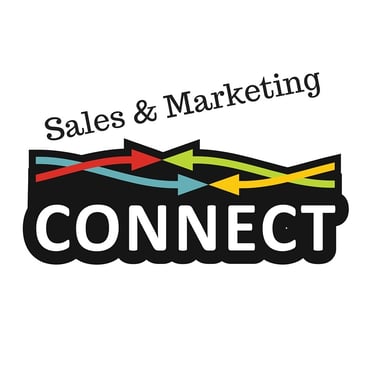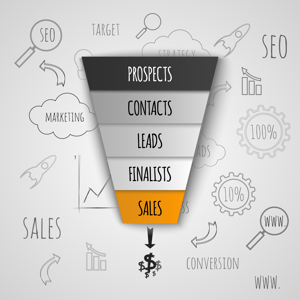How a Content Marketing Plan Can Save the Sales & Marketing Marriage
We all feel the pressure to be as efficient at our jobs as possible. Metrics dictate our decisions, follow us around, and predict our relative success … or failure. No one feels this more profoundly than salespeople. After all, if you distill it down, our jobs depend on their success. If nothing’s being sold, nobody’s getting paid. Having said that, the sales team isn’t in it alone. Marketing is an integral arm of sales. Traditionally, they have begrudgingly co-existed in many organizations—kind of like a bad arranged marriage. Both know they have an obligation to be there, yet they’ve discovered they don’t always speak the same language. There’s a disconnect that threatens to derail the best intentions of—what should be—a fruitful union. Content marketing is proven to attract prospects, and sales should be happy to embrace this methodology, because it will deliver the kind of leads they have been demanding for a long time.

The Perpetual Search
On average, Google now processes over 40,000 search queries every second, which translates to over 3.5 billion searches per day and 1.2 trillion searches per year worldwide. If you have any antiquated notions that old-school methods of cold-calling to nurture prospects is still your best tactic for attracting leads, just, well, Google it. That’s not to say that personal touch points don’t matter anymore. They very much do. But there are ways to cultivate the funnel flow so your content marketing does the work for you up to that point—in fact, it helps you get to that point.
Sales & Marketing Software Platforms
What evidence do we have that we can have successful sales & marketing marriages?
One tangible implication that the present-day sales & marketing marriage is a successful one is the proliferation of their offspring: content marketing software platforms. The deeper revelation here is that they are actually sales platforms, and in fact, some come with a built in CRM. And there are plenty of them out there. Admittedly, we are partial to HubSpot, as Grant Marketing is a HubSpot partner. We use it for many of our clients. (As and aside, we use others, and have researched others, and do prefer HubSpot’s overall capabilities and performance.) Choosing your software platform is certainly up to you, and variables like company size, money, and general marketing initiatives will play into your decision.
There are plenty to choose from because the demand for them exists: the constructs of marketing have changed and we need platforms that are tailored to these new needs. They allow for sales & marketing to share real time data and speak the same language—so your company can communicate with one unified voice and vision. Too often with the old way of marketing, there is a disconnect and information is not being communicated to the prospects all the way down the funnel. In Accent’s Sales Enablement Blog, they share some sobering stats: according to IDG Connect, 86% of B2B buyers say that marketing content is not useful, relevant or aligned with the needs of decision makers at their companies.

Unclogging the Funnel
When sales & marketing are not unified in vision and reciprocal support, the funnel gets clogged and stops effectively moving the prospect down. Sales feels unsupported and gets frustrated with marketing, marketing thinks sales isn’t properly nurturing their leads—and the prospects just give up.
The good news is that when done correctly, with marketing providing relevant content that aligns with the sales cycle, prospects feel informed and respond positively. The Accent blog goes on to add that studies from Forrester show that 76% of buyers choose a vendor that delivers effective value messages: Why buy? Why buy now? Why buy from us? And Sirius Decisions reports that the #1 inhibitor to sales enablement is the inability to communicate a value message.
Clear communication cannot be underestimated here. Properly implemented content marketing strategies address the motivation, timing, and solutions of prospects and customers. There is a caveat—proper content marketing strategies require due diligence (yup, lots of work) to ensure they positively impact the sales cycle. The beauty of creating relevant content is that much of it is evergreen and can be used as a resource for marketing, sales, and existing customers—often endlessly—depending on its nature.
When’s the “Right” Time?
Marketers need to provide content that satisfies all stages of the sales cycle: top of the funnel, middle of the funnel, and bottom of the funnel offers. Old-school methods might include having datasheets, sell sheets, case studies, catalogue offerings and the like available to the sale team so they can send them out via whatever CRM they are using. This requires them to closely monitor prospects and qualify leads in the CRM and hope they catch them at the “right” time. Flip that with content marketing (and the use of marketing automation tools), and the prospects get to decide what time is right for them. By the time they are “ready” to engage with you (personally), they have already completed, on average, 60% of their research, and are already 70% down the funnel. With a proper content marketing strategy in place, that should keep them engaged and informed—and you in their scopes. Without it, you are up against them coming to you, having been educated by your competitors.
And that’s the reality. As consumer habits change—and they have, drastically—providers have to be in step. In fact, be a step ahead. Because it’s incumbent upon you to also stay ahead of your competitors. This all hinges on communication—or content—if you will. The proper content keeps everyone informed.
Collaborative Cultural Buy-In
If you are doing your content marketing properly, upper management is involving all company stakeholders in the creation of content: sales, marketing, operations, engineering, procurement, finance, HR, etc. Yes, you read that right! One of the tremendous benefits of this is the cultivation of a collaborative, informative environment. When we run content marketing workshops for clients, the discussions among coworkers always provoke new knowledge and discoveries. We often hear remarks, like, “I never knew we did it that way because of that!” As well, it gets them talking to each other with one goal in mind and the assurance that they are sharing the responsibility (and successes) of a relevant and contemporary content marketing strategy. It hits home for people because they all recognize their own buying patterns, both personally and professionally.
Content marketing is more than a trendy technique to get people’s attention. It’s a mediator between consumers’ needs and your abilities. It promises possibility and provides options. It allows consumers to find the right match for their needs, and can also naturally qualify leads for you. All relationships work better with fluid communication. When sales is talking to marketing and they are both united on what and when they communicate to prospects and customers, everyone feels the love. You should share some, too.
If you are wondering how to create a content marketing strategy for your company, you’re in luck! We have an upcoming webinar on Wednesday, October 14 at 1:30 p.m. EDT that will show you how. Click here to register.


